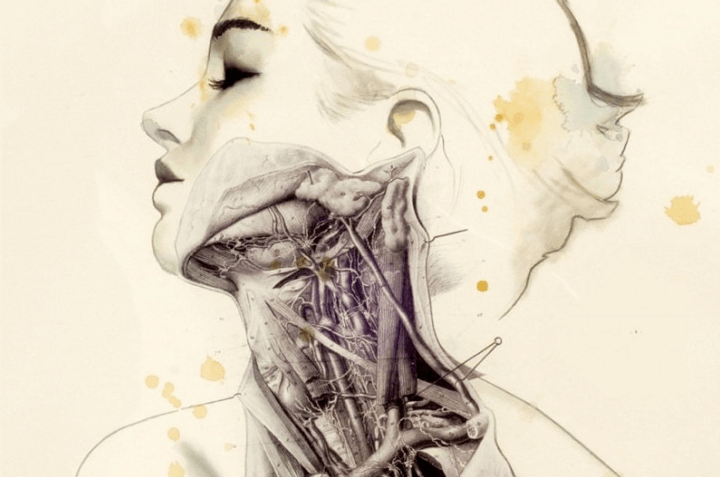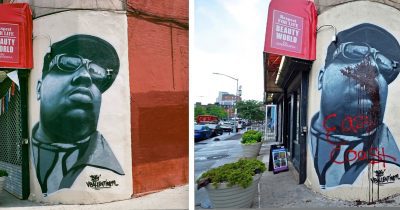Grotesque and Human: Talking with Amelia Gray about GUTSHOT

GUTSHOT
Amelia Gray’s been holding court for a while as a ruler of weird fiction–her brand of methodical madness unlike anything else. Her first two collections AM/PM (2009) and Museum of the Weird (2010), as well as her novel Threats (2012), had readers second guessing the efficiency of their own imaginations. Containing things like talking armadillos and a man married to a paring knife, her stories are filled with a surreal, creepy innocence that never take themselves too seriously.
The stories in Gray’s latest collection Gutshot (2015) are a touch darker and sometimes even gory, although equally playful and wondrous, their length ranging; some are barely a page long, while others stretch up to 12 pages—although swift to the eyes, they don’t feel that long either.
“In the Moment” features a whirlwind couple smitten in the warmth of their own impulses, which make them truly dysfunctional to anyone but each other. In “House Heart,” another couple pays a young lady to wander in the ventilation system of their home, occasionally shoving cash through the slats to keep her complaints at bay.
Gray’s stories are singular and wise, a perceptive curio of quiet observations pivoting in themes like isolation and the honest anxieties which bleed as a symptom of such things. I had a chance to hang with Amelia and ask her a few questions while she was in Brooklyn recently, making a rare appearance at the Franklin Park Reading series for a read of “House Heart,” which blew the venue to smithereens.
Gutshot‘s cover is striking! Beautifully grotesque yet thoroughly human—much like the stories inside. Was it one of few that were offered or was FSG like “here it is, this marvelous and exquisite cover”? Did you cry? Are you familiar with the artist?
The designer Charlotte Strick (well, half the designer team; Strick worked with Claire Williams Martinez) did my cover for Threats and so I knew she would nail it. I wasn’t familiar with Fernando Vicente’s work but have become mildly obsessed. I didn’t cry but I think I said “Whoa” or something. I was working at an ad agency at the time, surrounded by art directors with really good taste. I said, “Guys, come look at this.”
Some stories like “A Gentleman” and “Journey’s End” are only a few paragraphs long, although they pack in a lot. What attracted you to that style of brevity?
I did a lot of thinking about making stories longer when I was in school. I would sometimes tell myself, if I didn’t hear it from others: Well, you didn’t have much to say there, so this is a small story with small aims and now it’s done. But I had this feeling, because I was reading Don Barthelme and Calvino and Kafka and Shirley Jackson, that a small story doesn’t have to have small goals.
In your story “Date Night,” a “woman screams until a child slips a dessert spoon under a muscle in her neck and flings her larynx to the floor…” In the context of your characters being fed up with being helpless meat-bags, that sentence makes a lot of sense, but outside of being known in the world of fiction as an innovator of dark and imaginative hilarity, your fiction must polarize to some extent…
Sometimes I hear I’ve frightened someone, or they won’t read a story of mine before bed or something. I don’t understand it. It’s maybe like living underwater or on the moon—it feels very normal, and then someone comes along and says, Did you notice you’re living on the moon? And I’m like, No wonder my chairs were floating.
But that’s not quite right. I think everyone lives on the moon a little. But there’s no utility to it. It’s rarely profitable. I’ve found that to be true more often than not.
“Fifty Ways to Eat Your Lover” (which was originally published by McSweeney’s) is playfully dark and romantic. I remember your reading of it at Stories in Echo Park; it was pretty well-received. But you mentioned it’s received some flack for being misandrous. What are your thoughts on that?
I already addressed elsewhere how that criticism doesn’t personally hold true to that story (which is maybe the sappiest lovers story I’ve ever written and also has nobody else felt so hard in feeling that way and/or watched Punch Drunk Love?) but there are a larger points worth considering. It’s strange to pick up a collection of often-absurd stories and essentially say “Okay, someone’s plunging a blade into a snake, someone’s pulling their breasts off and applying them to their throat, whoa whoa whoa, what’s with the man-hating over here?” I’ve been asked how it would come off if a man wrote the story. Which is a good question and good to talk about and think about. The crazy-woman character is more acceptable than the crazy-man character in stories of violence because it is much less common in reality. And a man has written that story before, in many ways, in both reality and in fiction. Also a man probably would have earned more money for writing that story.
But I don’t know. Its frame is drawn from a cute song about men escaping women over and over again. I think it’s a sweet and funny story.
One of my favorite stories “Year of the Snake” is about a giant snake that splits a town in two which induces “a devastating insomnia that settled over both sides.” It’s a bit of an outlier compared to the rest of your stories being that it’s amped up in playful impossibilities as children multiply, vanish, turn sepia-toned and speak in tongues. What inspired that story in particular?
I had been reading Cesar Aira’s The Literary Conference, where a scientist tries to clone a brilliant writer and instead clones a bit of his blue tie, and then giant blue worms swarm the conference city. I also loved the tone of that story, which is told in a very straightforward way. I wanted to go deeper into the physical nature of a giant snake and also I wanted to think and talk about how any strange thing becomes ordinary if you give it enough time. I was writing at the time on assignment for a clothing company that was going to print the story in their catalog. Wouldn’t that have been cool?
So I guess they didn’t print that story in the catalog is what you’re saying… their loss. Can you tell us more about your job at the clothing company?
That was just a freelance thing. They reached out and solicited a story, and then things didn’t work out. Maybe their creative director decided to do something different or it looked weird in layout or they decided they didn’t much like the story. It happens all the time in marketing—changes of direction, I mean. Soliciting stories doesn’t happen all the time and that was very cool.
Earlier you mentioned an ad agency as a former employer that you recently quit. Was it to focus more time on your writing? Did you enjoy working in advertising?
I liked working at the agency. Last night after dinner we were passing around the laptop sharing ads. Someone showed the old Errol Morris Miller Lite ads W+K did that look like they could have come out last week despite being 15 years old. And then I was showing the work Taco Bell was doing in the 70s and 80s when they were tasked with inventing and designing and then explaining Mexican food to whole swaths of the country. Advertising is the ultimate modern cultural artifact.
I quit to spend more time writing but I’ll be back in it. I like the challenge and the constraints. I like getting out of my head and meeting new people. And freelance work is like all that with fewer houseplants around the office desk.
Does everyone really bring their dog(s) to work in LA?
That is a bold lie perpetuated by Hollywood. In most places the carpet is too nice.
I know you’re working on your second novel right now. Can you tell us anything about it?
It’s about love and loss and the ways in which we are stubborn and how that helps and hurts us. It’s historical fiction.
When can we see it?
Last night I dreamed I answered this question by saying it was Wizard of Oz fanfiction which is a bold lie perpetuated by Hollywood. I don’t know exactly when it will be ready! A year and a half at the soonest. I’ve got to give it its due.
You might also like 



















